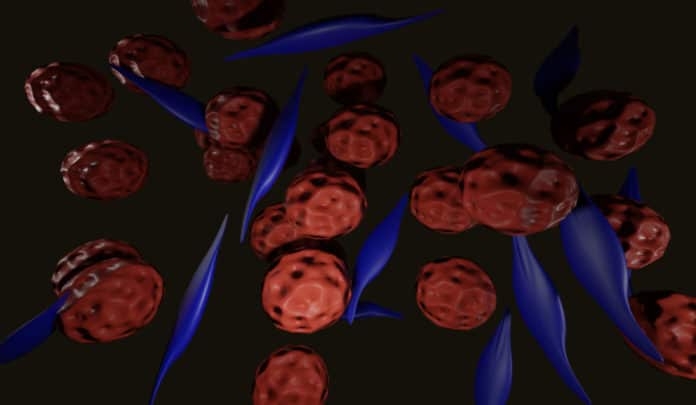Uveal melanoma is the most common primary intraocular tumor in adults. Tumors are located either in the iris (4%), ciliary body (6%), or choroid (90%).
Uveal melanoma may have no early signs or symptoms. But, when a tumor grows, it may cause symptoms like blurred vision or other changes in vision, a dark spot on the iris, a change in the size or shape of the pupil, etc.
The most common uveal melanoma treatment includes surgery and radiation. However, once UM spreads to other organs, the chances of survival are small.
The reasons why only a group of patients with specific tumor characteristics develop Metastatic Uveal Melanoma and the mechanisms driving metastasis are unknown.
A new study now reports the molecular mechanism that drives the progression of uveal melanoma (UM). The study could lead to better Uveal Melanoma treatments to suppress earlier a lethal type of tumor.
By integrating several genetic and other analyses at the single-cell level, scientists found that UM progression is propelled by the loss of Polycomb Repressive Complex 1— proteins that regulate gene expression.
This loss prompts unusual gene expression and errors in the manner chromosomes isolate during cell division. At last, this prompts an inflammatory response that makes the tumor more aggressive.
Samuel Bakhoum from Memorial Sloan Kettering Cancer Center said, “By uncovering key steps involved in tumor progression, our work highlights an opportunity for earlier therapeutic intervention to suppress tumor evolution.”
The study represents a breakthrough in understanding cancer biology, linking two hallmarks of cancer — chromosomal instability and epigenetic alterations that interact to advance disease progression.
The study’s principal investigators and Mathieu Bakhoum are Ashley Laughney from Weill Cornell Medical School, Samuel Bakhoum from Memorial Sloan Kettering Cancer Center, and Paul Mischel from Stanford University. Jasmine Francis from Memorial Sloan Kettering is the co-first author.
Journal Reference:
- Bakhoum, M.F., Francis, J.H., Agustinus, A. et al. Loss of polycomb repressive complex one activity and chromosomal instability drive uveal melanoma progression. Nature Communications 12, 5402 (2021). DOI: 10.1038/s41467-021-25529-z
